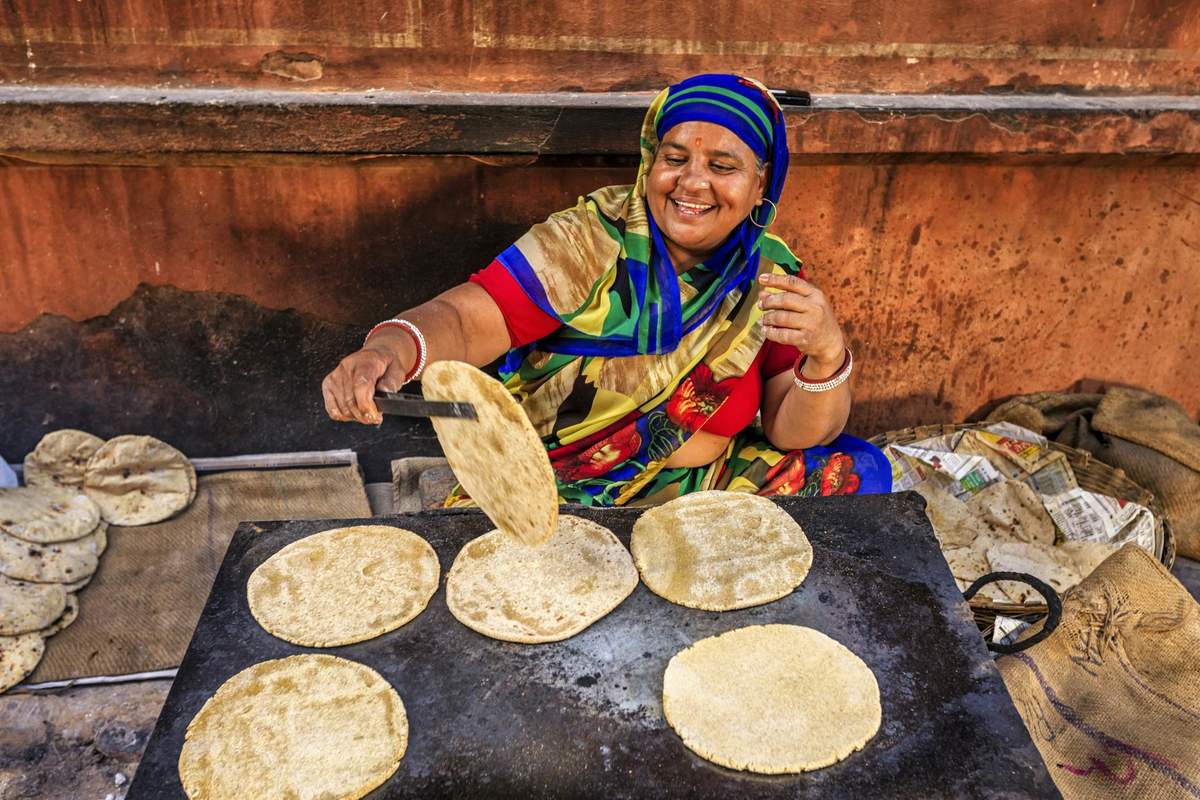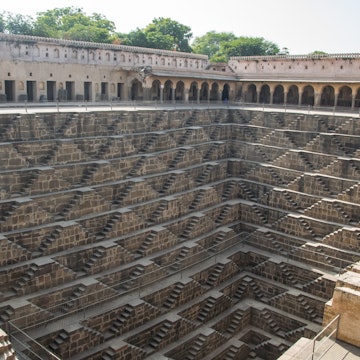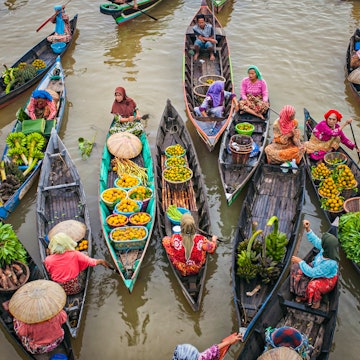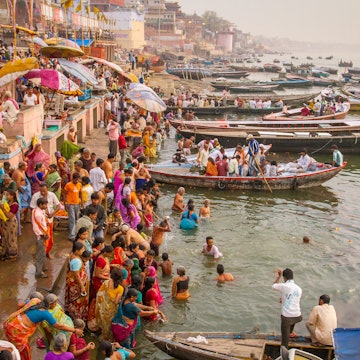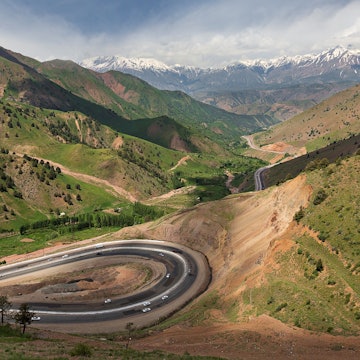

From ancient cave paintings to Mughal wonders such as Agra Fort, India serves up history on every corner. f11photo/Shutterstock
With the ruins of forgotten cities and vanished and vanquished empires, and a history that scrolls back to the Stone Age, India’s past is best described as kaleidoscopic. As the birthplace of three major religions, and a hub for repeated waves of multicultural immigration, this peninsular nation’s long history is anything but boring.
Before you go to India,
having a basic understanding of your destination’s history, land and
culture will greatly improve your experience. Immerse yourself in the
nation’s past by investigating these 15 historic places in India, each
with a fascinating story to tell.
A quick guide to India's rich history
Spanning 3,287,263 sq km (1,269,219 sq miles), India is home to 43 UNESCO World Heritage Sites, including world-famous places such as the ornate Taj Mahal, the ancient Konark Sun Temple, the Buddhist monuments at Sanchi and several of the locations on this list of India’s top historic sites.
India’s history stretches back to the Paleolithic period. Around 500,000 years ago, sites such as the Soan Valley and the Neolithic site of Mehrgarh became the launchpad for the Indus Valley civilization, which grew up along the modern-day boundary between India and Pakistan.
After the mysterious decline of the Indus Valley peoples, waves of migrants imported new religions and built flourishing city-states. More crisscrossing of people followed as Arabian traders gave way to the Turkic sultans who established sultanates in Delhi, Bengal, Malwa and the Deccan.
This cultural melting pot bubbled to greater heights under the Mughal empire, before suffering the toll of heavy European colonial exploitation. India’s heroic battle with colonialism left an indelible mark on the country, in terms of poverty and communal unease fuelled by the horrors of Partition. Both continue to be considerable challenges to the country in modern times.

1. Bhimbetka, Madhya Pradesh
India’s antiquity is beautifully illustrated in the rock shelters of Bhimbetka in Madhya Pradesh, one of India’s earliest settlements, where red pigment paintings, engravings and carvings depict fierce battles, intense hunts and totemic animals. Some of the rock shelters were used at least 30,000 years ago, and the caves also have other markers of human habitation such as ostrich eggshell beads, quartzite cleavers and hand axes.
While human settlement in these caves was continuous from the Stone Age to the Mesolithic period, rock art was produced intermittently right up until the medieval period, making Bhimbetka an invaluable record of Indian history. Visitors can explore this ancient art gallery tucked amongst the boulders of Bhimbetka for an up-close glimpse of what life in India was like thousands of years ago.
Planning tip: The best way to reach the site is by car or on a guided tour; make arrangements in the city of Bhopal, about 45km (28 miles) northwest of Bhimbetka.
2. Dholavira, Gujarat
Located in the heart of the harsh Kachchh (Kutch) desert in Gujarat, Dholavira is a 5000-year-old story of human resilience. The city was built largely from stone, starting in 3000 BCE with a fortress that was destroyed by an earthquake some 400 years later. This didn’t stop its inhabitants; between 2500 and 2000 BCE, Dholavira’s citizens built a well-planned citadel and lower town, with extra care given to the drainage system. Huge reservoirs built for rainwater harvesting can still be seen today.
Stone signboards were installed to welcome weary desert travelers, and one still stands at the northern entrance to the citadel, bearing 10 symbols in the enigmatic Indus script. As part of the Indus Valley civilization, this city’s inhabitants were highly advanced for their time, like their contemporaries in the Mesopotamian and Egyptian civilizations.
Planning tip: Exploring the massive excavation site can take a few hours and expose you to intense sunshine as the ruins sit right on the Tropic of Cancer. Be sure to pack water, sunscreen and a sunhat for your visit.
Although a public bus runs from Bhuj to Dholavira, the most convenient way to get there is to arrange your own transport in Bhuj, whether by taxi, with a chartered car and driver, or on a guided tour.
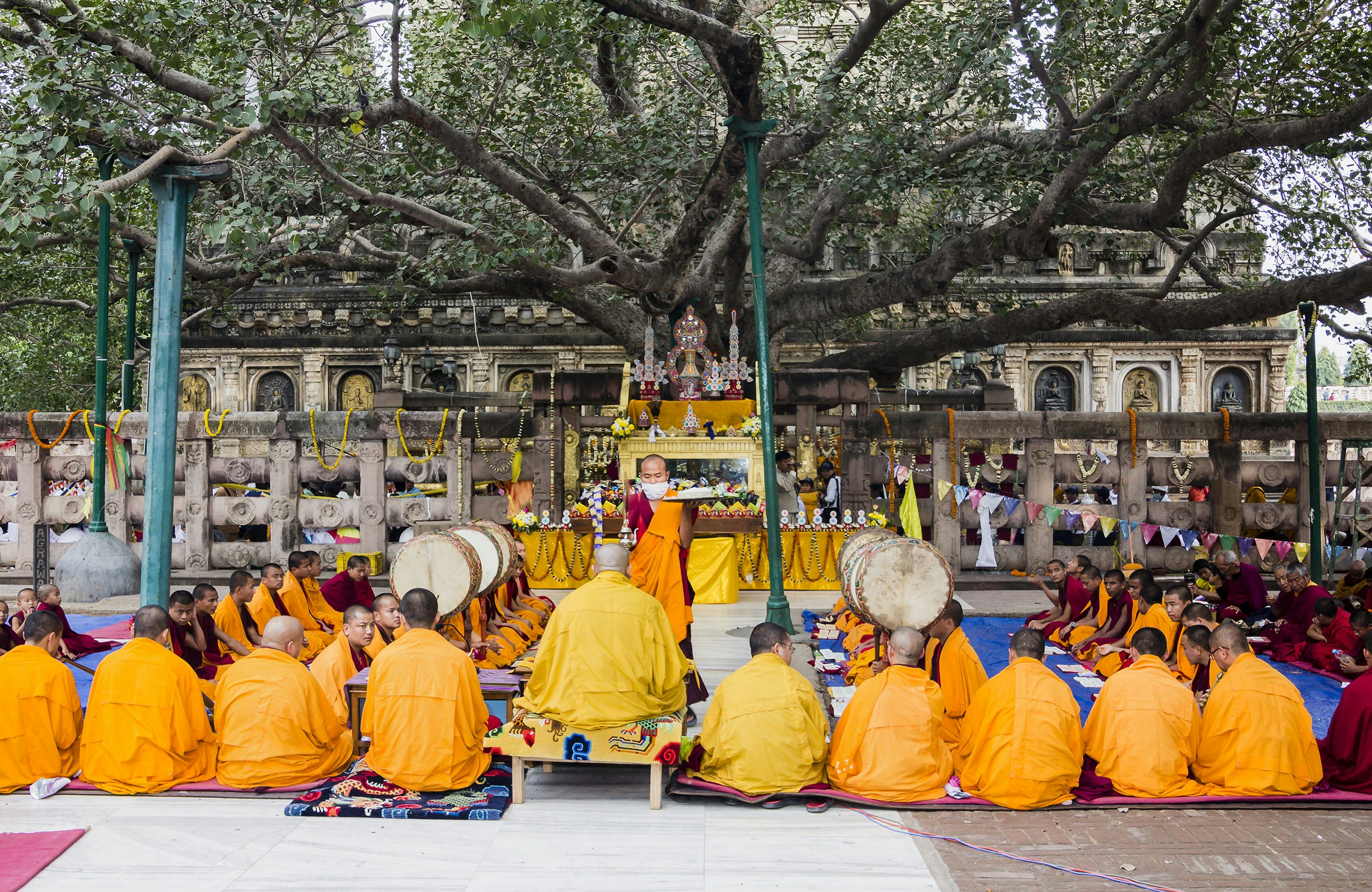
3. Bodhgaya, Bihar
Siddhartha Gautama, the prince of Kosala, earned the prestigious title, “Buddha” (Enlightened One), at Bodhgaya in modern-day Bihar. The Mahabodhi temple is said to mark the exact spot where the Buddha, after years of wandering and asceticism, took a seat under a Bodhi tree and passed through eight stages of wisdom to attain Enlightenment.
The Mahabodhi temple has a fascinating history; it lay forgotten for centuries before being partially reconstructed in the 19th century. Bodhgaya also features a remarkable collection of temples and monasteries built by people from Sri Lanka, Korea, Japan, China and other countries with a large Buddhist population. Each temple features the unique architectural style of the culture that constructed it.
Planning tip: Cell phones are not allowed in the temple complex, so be prepared to leave yours in a locker before you enter. Direct bus services run to Bodhgaya from Varanasi, or you can reach Bodhgaya by autorickshaw from nearby Gaya, which is served by buses, trains and flights.
4. Nalanda, Bihar
While Nalanda near Patna in Bihar was an important trade center in the 5th century BCE, it rose to prominence in the 5th century CE with the establishment of the Nalanda University.
Predating the University of Oxford in England by almost 500 years, this Buddhist university was visited by Chinese pilgrims Xuan Zang and I-Tsing, who wrote detailed accounts of the university’s rules for admission and registration in the 7th century CE.
Later overshadowed by other universities in the vicinity, Nalanda faded into obscurity due to a lack of patronage in the 13th century, leaving behind a collection of haunting ruins.
Planning tip: The artifacts and relics in the Nalanda Archaeological Museum provide insights into the cultural and historical significance of the site; be sure to visit to discover more about this ancient seat of learning.
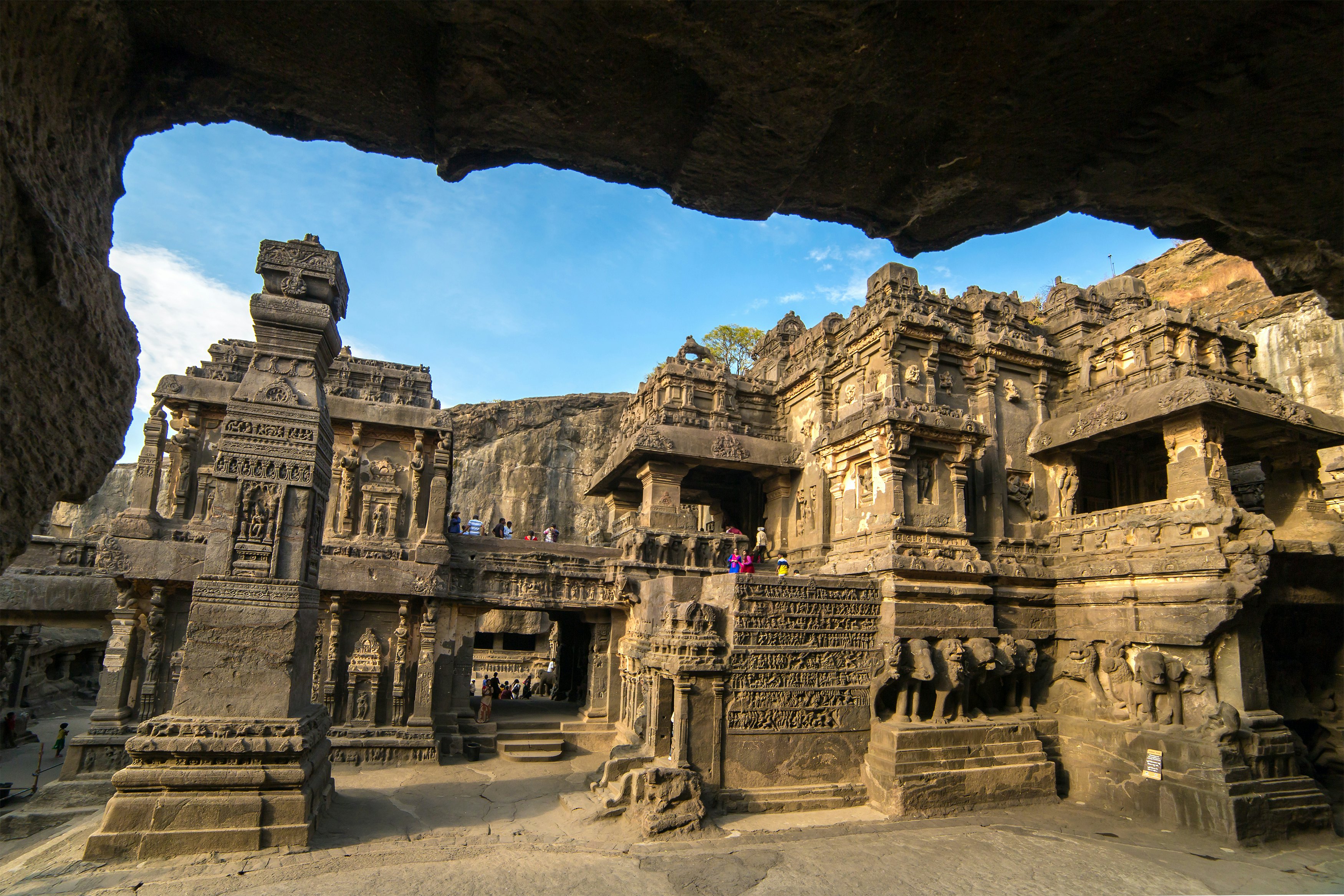
4. Ajanta & Ellora Caves, Maharashtra
Two of India’s most ancient religious sites, the rock-cut caves of Ajanta and Ellora in the Western Ghats in Maharashtra date back at least 1200 years – a history vividly depicted on their walls in the form of paintings and stone carvings.
While the Ajanta Caves, created from the 2nd century BCE onward, were exclusively Buddhist, excavated as monasteries and worship halls for monks, the Ellora Caves, founded in the 7th century CE, were multi-religious, featuring Hindu, Buddhist and Jain shrines.
The walls of Ajanta are adorned with a stunning array of paintings depicting scenes from the life of the Buddha while Ellora’s walls sport lifelike rock-cut sculptures of deities, along with the magnificent Kailash Temple, hewn from a single block of rock.
Planning tip: After exploring Ellora's Kailash Temple, hike to the top of the cliff, where you can take in a panoramic view of the entire temple complex with its many Buddhist, Hindu and Jain temples. Aurangabad is the most convenient hub for visitors, with buses to both sites.

6. Mehrauli Archaeological Park, Delhi
Delhi’s story as India’s most important seat of power begins in the 12th century with Mehrauli, the capital of the Delhi sultans. This historic site in Delhi's southern suburbs boasts dozens of 800-year-old tombs, mosques and monuments, along with its crowning glory, the 72.5m-high (238ft) minaret known as the Qutb Minar (also spelled Qutab or Qutub Minar), which you can view inside the Qutb Minar Complex.
Built in three stages over a period of 200 years, this sandstone and marble marvel is a palimpsest in stone. Rising next to Delhi’s oldest mosque, the Qutb Mosque, the Minar was built in honor of Delhi’s patron saint, the Sufi mystic Qutbuddin Bakhtiyar Kaki. His dargah (tomb) and the hospice he founded for hijras (eunuchs) stand nearby.
An ornate gateway, the Alai Darwaza, featuring the first true dome in India, stands next to the Qutb Minar, and more tombs and palaces dating from the 12th to the 19th centuries spill into the tree-covered Mehrauli Archaeological Park.
Planning tip: A ticket is required to visit the Qutb Minar Complex, which is administered by the Archaeological Survey of India. Admission to the surrounding Mehrauli Archaeological Park is free, and the ruins feature more than 100 monuments of historical significance. Both sites are accessible via the Delhi Metro.
7. Mandu, Madhya Pradesh
A 14th-century Indian poet described the fortress of Mandu in Madhya Pradesh as being as “high as the sky” – and the fort, with its 61m-high (200ft) walls, does indeed give that impression. Capital of the 14th-century Malwa sultanate, Mandu also contains an early dar-us-shifa (hospital), sometimes misidentified as “Gada Shah’s shop.”
Ancient Persian texts describe the hospital as being two stories high, with a separate section reserved for the treatment of mental health. Mandu’s water scarcity led its patrons to build numerous water management structures, many of which still sustain the local population.
Planning tip: Located far from other tourist destinations, Mandu provides an opportunity for peaceful exploration with few crowds, especially during an early morning visit. Indore is the most convenient hub for visitors.

8. Hampi, Karnataka
Capital of the Hindu Vijayanagar kingdom, the city of Hampi in Karnataka flourished for two centuries before being abruptly deserted in the 16th century. The ruins continue to be eerily empty but the site boasts an impressive set of monuments, such as the still-in-use Virupaksha Temple and the Hazarama Temple, whose walls feature elaborate sculptures depicting scenes from the Hindu epic, the Ramayana.
The fortified city of Hampi was a formidable one, as reported by the 16th-century Portuguese traveler Domingo Paes. Signs of the city’s sacking in 1565 by the armies of the Deccan sultanates are imprinted on the ruins of the Vittala temple, with its famous chariot-shaped shrine, and the damaged Lakshmi Narasimha statue.
Planning tip: Give yourself plenty of time (at least two days) to fully explore the Hindu temples and surrounding structures at Hampi; accommodation is available in Hampi Bazaar and other local villages. Many temples are free to visit, but there’s an entry fee for the Virupaksha Temple, Vittala Temple and Royal Enclosure.
9. Kumbhalgarh, Rajasthan
A 15th-century wonder, the fort of Kumbhalgarh was constructed over a period of 15 years, and it’s one of the highlights of southern Rajasthan. Named after its patron, Maharana Kumbha, the fort serves as a formidable reminder of medieval Indian military genius.
The barrel-buttressed wall that rings Kumbhalgarh is celebrated as India’s Great Wall – a serpentine 36km-long (22-mile) construction perched at 1100m (3609ft) above sea level. With its high battlements, Kumbalgarh was an impregnable fortress that the Udaipur Maharana could take refuge in when under attack.
Hike around inside the walls to view palaces, guard rooms, step wells and a remarkable collection of some 360 ruined Jain and Hindu temples.
Planning tip: A maze of paths crosses the interior of the fort and there’s lots to see, so you’ll want to get an early start and pace yourself. Alternatively, visit in the early evening, when a 45-minute light and sound recounts stories from the fort’s glorious past.

10. Old Goa, Goa
Established by the Bijapur sultanate but seized by the Portuguese in the 16th century, Goa is a reminder of India’s maritime history. The Portuguese thalassocracy left behind a series of mostly Mannerist-style churches before their colonial settlement – known today as Old Goa – collapsed in the 17th century following a malaria epidemic.
The largest church is the Sé Cathedral, which took 60 years to build. The murals on the walls of the Church of St Francis of Assisi show an unmistakable Indic influence in the way the angels and saints are depicted. The stone used for churches such as the Basilica de Bom Jesus was quarried at Bassein, another Portuguese stronghold adjacent to Goa.
Planning tip: There’s a lot to do in Goa. Peruse the markets of nearby towns such as Anjuna, Mapusa and Panaji, and visit local restaurants to sample Indian staples and fresh seafood dishes infused with Portuguese influences.
11. Vijayapura (Bijapur), Karnataka
This city, the seat of the Bijapur sultanate, contains architecture that is beautifully syncretic, a perfect synthesis of Timurid domes and Indic carvings. The epitome of this hybrid architectural style is the Golgumbaz, the 17th-century mausoleum of its patron, Sultan Mohammed Adil Shah.
The sultan lies buried under a huge dome measuring 44m (144ft) in diameter – the second largest dome ever built after St Peter’s Basilica in Rome. Its “whispering gallery” has brilliant acoustics, a particular interest of Mohammed Adil Shah’s father, Ibrahim II, who built a new city, Nauraspur, adjacent to Bijapur, dedicated to the practice of Hindustani classical music.
Sultan Ibrahim himself lies buried in an ornate mausoleum, the Ibrahim Rouza, decorated with some of the finest arabesques in India.

12. Agra, Uttar Pradesh
While the city of Agra is most famous for the Taj Mahal, the inspiration for this landmark building lies nearby, in the form of the tomb of Itmad-ud-Daulah, built a few decades earlier. Made from white marble and adorned with pietra dura mosaics, this mausoleum is an ode to a father from a daughter. The tomb was commissioned by the Mughal queen Nur Jahan, wife of Emperor Jahangir, who also minted coins in her name in the city.
About 36km (22 miles) west of Agra, Fatehpur Sikri was the seat of the Mughals for a considerable period under Emperor Akbar. It's known for the serene white marble tomb of the Sufi saint Salim Chishti and the lofty Buland Darwaza gateway. The imposing architecture of the Darwaza is mirrored in Akbar’s red sandstone tomb, a few miles away in Sikandra.
Planning tip: There’s too much to see in Agra to fit everything into a single day. Devote at least one day to the Taj Mahal, Agra Fort and Itmad-ud-Daulah, and another day to Fatehpur Sikri.
13. Old Delhi, Delhi
Constructed by Emperor Shah Jahan in 1639, the city of Shahjahanabad, now known as Purani Dilli (Old Delhi), is one of the nine historical cities of Delhi. Located on what was once the banks of the Yamuna River, this city was the seat of the Mughal Empire from the 17th century to the middle of the 19th century, with brief intervals where the city was seized by other rulers.
Shajahanabad was designed to represent the Mughal empire, with the residence of the Mughal emperor, the Red Fort, as its axis mundi, and the rest of the double-walled city laid out in front of it. Commissioned by Shah Jahan’s daughter, Jahanara, the Chandni Chowk market still bears signs of raids by colonial forces in the wake of the 1857 revolt against British rule.
Planning tip: While visiting the Red Fort, look for the dainty, white-marble Mumtaz Mahal, an architectural wonder showcasing the mesmerizing craftsmanship of Mughal artisans, and the artificial stream used to cool the Rang Mahal palace. Like many of India’s outdoor attractions and historical sites, the best time to visit is October through March when temperatures are cooler.
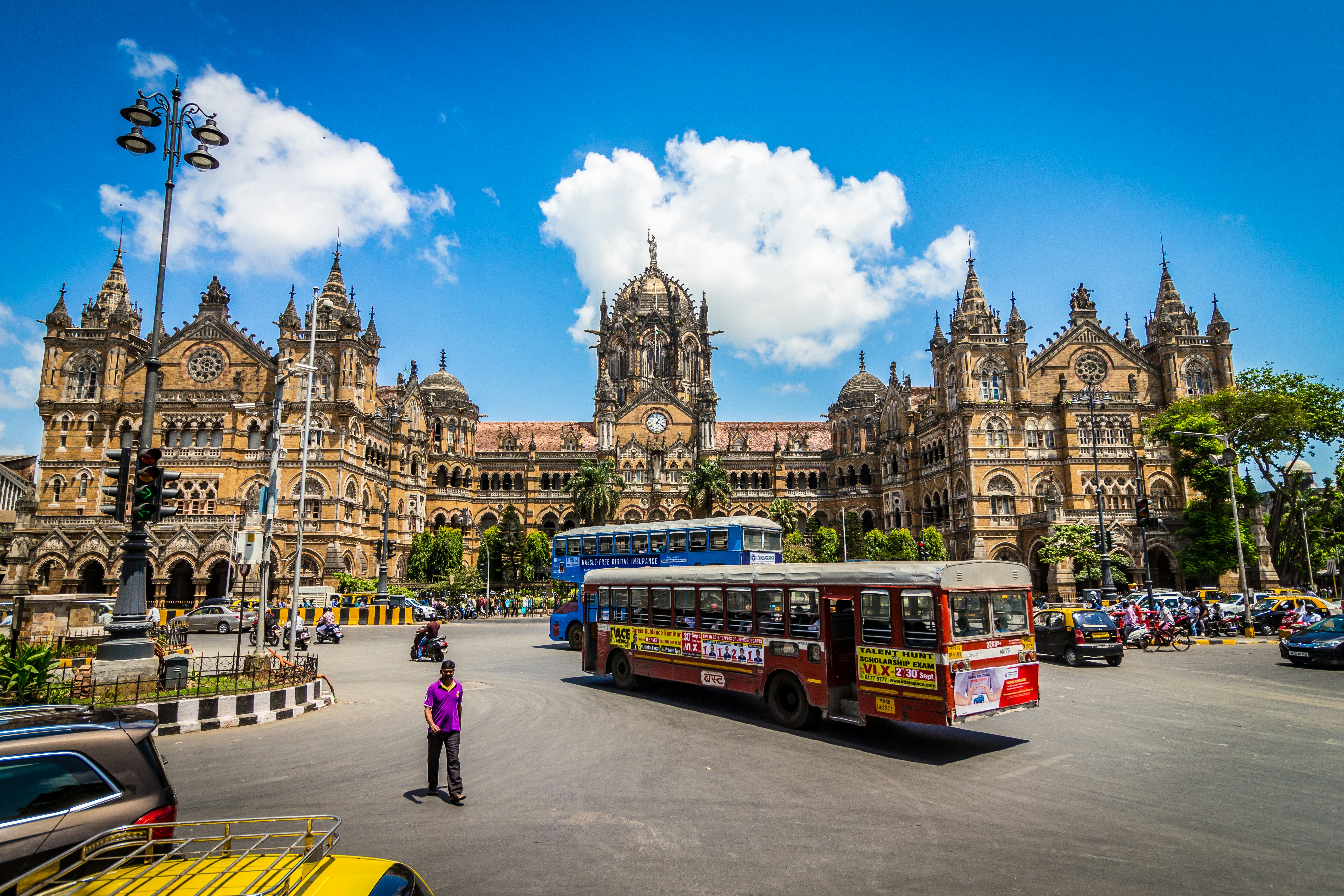
14. Fort, Mumbai
The focus of the British occupation of Bombay (Mumbai) was the Fort, previously known as Fort George, built over the site of the Maratha-era Dongri Fort. Today, the area is littered with reminders of India’s colonial past.
Most prominently, Elphinstone Circle, later renamed Horniman Circle in honor of an English editor who supported Indian independence, was constructed in a neo-classical style with a covered arcade and lofty pillars.
The British love of neo-Gothic architecture can be seen in the Secretariat, the University of Mumbai and Rajabai Clock Tower, the David Sassoon Library and Reading Room, and Chhatrapati Shivaji Terminus (formerly Victoria Terminus) – all dominated by pointed arches, carved details and high ceilings.
Planning tip: Most of Mumbai’s British-era buildings can be visited for free, though you may need permission to enter some structures. Try to time your visit to coincide with the Kala Ghoda Arts Festival, held each year in Fort in late January, or the Ruhaniyat music festival which visits Mumbai in December.
15. Jhansi, Uttar Pradesh
Part of the kingdom of Orchha, Jhansi Fort was built in the early 17th century by a high-ranking Mughal officer, Bir Singh Bundela. The fort’s tall granite walls would later be bravely defended by the queen of Jhansi, Rani Lakshmibai, during the Indian rebellion of 1857, when Indian troops turned against their British commanders.
Using the Kadak Bijli cannon (which is proudly displayed in the fort today), Lakshmibai resisted a brutal siege by British commander Hugh Rose and his forces, but was ultimately unsuccessful, dying heroically on the battlefield. Scenes of this epic battle adorn the walls of Orchha’s Lakshminarayan Temple, which was originally constructed in the 17th century.
Planning tip: Jhansi is well-connected by roads and rail to nearby cities; consider visiting as a detour on the way from Gwalior to Khajuraho. Be sure to traverse the fort’s ramparts for magnificent views.
This article is adapted from an essay written by Dr Ruchika Sharma for Lonely Planet's India guidebook, published November 2024.






